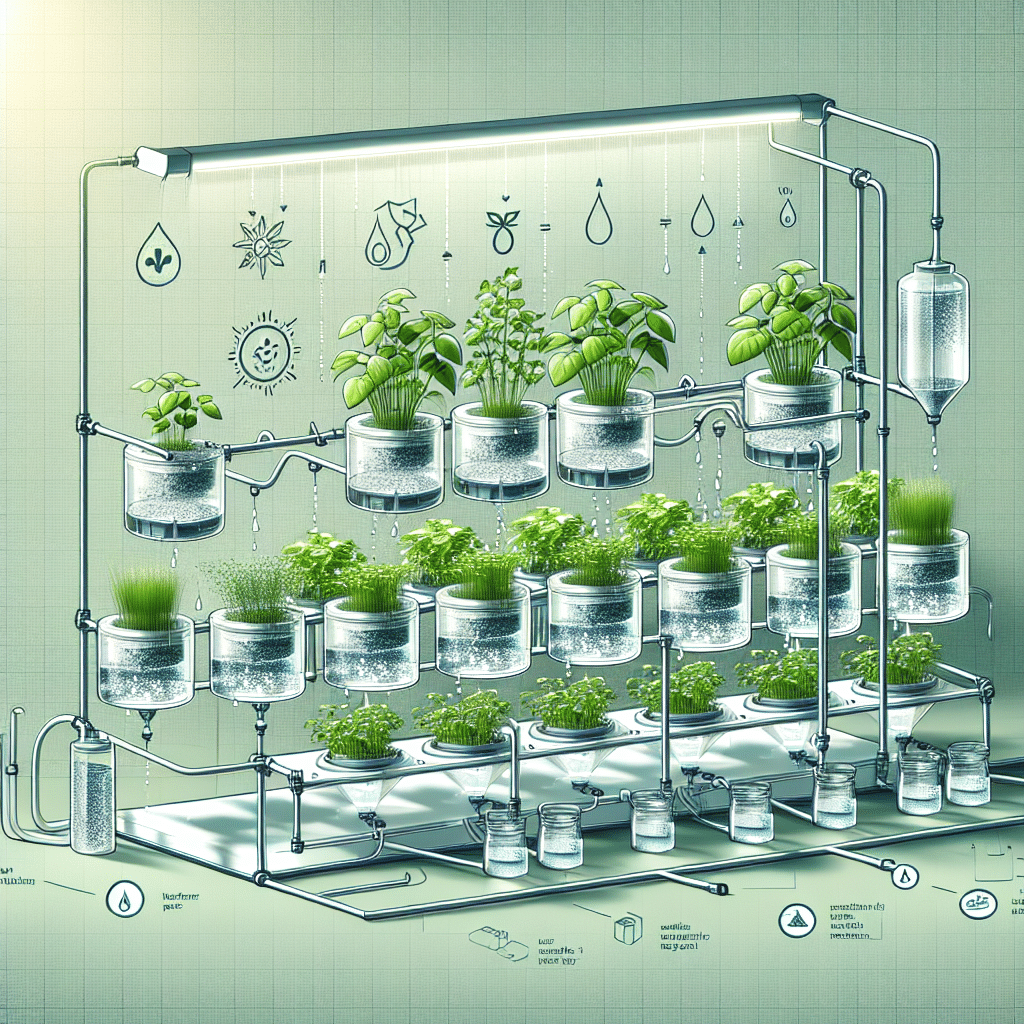How to Create a Self-Watering Hydroponic Herb System
Understanding Hydroponics
Hydroponics is a method of growing plants in a soil-free environment using nutrient-rich water. This technique is highly efficient, allowing plants to absorb nutrients directly through their roots, leading to faster growth and higher yields. Creating a self-watering hydroponic herb system integrates automation into this process, reducing maintenance and ensuring optimal hydration for your herbs.
Materials Needed
- Container: Use a plastic or glass container (5-10 gallons) that will hold the water and nutrients.
- Net Pots: Choose net pots (often 3-6 inches in diameter) to hold your herbs.
- Growing Medium: Use a soilless medium like clay pellets, rock wool, or coconut coir, which provide structure and support roots while allowing oxygen and water flow.
- Water Pump: A submersible water pump to circulate the nutrient solution.
- Timer: An electrical timer to control the watering schedule.
- Hydroponic Nutrient Solution: A balanced nutrient mix designed for hydroponic systems.
- Tubing: Flexible PVC tubing to connect the pump to the net pots.
- Air Pump and Air Stone (optional): For aerating the nutrient solution, improving oxygen availability to the roots.
- pH Testing Kit: To monitor and adjust the nutrient solution’s pH level.
- Herb Seeds: Choose a variety of herbs such as basil, parsley, cilantro, or mint.
Step-by-Step Guide
Step 1: Prepare the Container
Start with your chosen container. Clean it thoroughly to remove any residues from previous use. Drill small holes in the lid or cover if using a shallow container, allowing the net pots to sit securely above the water level while still being able to receive moisture.
Step 2: Assemble the Hydroponic System
- Insert Net Pots: Place net pots in the drilled holes. Ensure they’re stable and do not fall into the container.
- Add Growing Medium: Fill each pot with your chosen growing medium, leaving some space at the top.
- Sow Seeds: Plant one or two seeds in each net pot, following the depth suggested for the specific herb variety.
Step 3: Prepare Nutrient Solution
Fill the container with water, leaving adequate space for the net pots. Add the hydroponic nutrient solution according to the manufacturer’s guidelines. It’s essential to make sure the nutrient solution is well mixed.
Step 4: Set Up the Pump and Tubing
- Install the Water Pump: Place the submersible water pump in the container, ensuring it sits at the bottom.
- Connect Tubing: Attach flexible tubing to the pump’s outlet. Run the tubing up to the net pots and position it to allow nutrient solution to flow evenly across them.
Step 5: Automate with a Timer
Connect the water pump to the timer. Set a watering schedule, starting with intervals of 15-30 minutes every couple of hours. Adjust the timing based on the specific needs of your herbs and the ambient environmental conditions.
Step 6: Aeration Setup (Optional)
If using an air pump and air stone, place the air stone at the bottom of the container and connect it to the pump. This will increase oxygen levels in the nutrient solution, promoting healthy root development.
Step 7: Monitor pH Levels
Use the pH testing kit to check the pH of your nutrient solution. Ideally, it should be around 5.5 to 6.5 for most herbs. If the pH level is outside this range, adjust it accordingly using pH up or down solutions.
Step 8: Regular Maintenance
- Check Water Levels: Regularly monitor the water levels in your container and refill as needed.
- Nutrient Solution Changes: Change out the nutrient solution every two weeks to prevent nutrient depletion and buildup of harmful pathogens.
- Observe Herb Growth: Keep an eye on the growth of your herbs. Trim any yellowing or decaying leaves to promote healthy growth.
Step 9: Harvesting Your Herbs
Once your herbs reach adequate size (typically when they have several sets of true leaves), you can begin harvesting. Use clean, sharp scissors to cut the leaves- harvesting from the top encourages bushier growth.
Additional Tips
- Lighting: If growing indoors, use LED grow lights to provide adequate light, mimicking natural sunlight cycles.
- Climate Control: Ensure proper temperature and humidity levels for optimal growth. Most herbs thrive at temperatures between 65°F to 75°F (18°C – 24°C).
- Plant Companion Herbs: Consider growing herbs with similar water and light requirements together to maximize space and efficiency.
- Organic Options: Look for organic nutrient solutions if you prefer a chemical-free approach.
Troubleshooting Common Issues
- Yellow Leaves: This can indicate overwatering or nutrient deficiencies. Assess water levels and check for proper nutrient balance.
- Wilting Plants: This may occur due to under-watering. Increase the frequency or duration of your watering cycle.
- Pests: Regularly inspect your plants for pests. Use organic insecticidal soap or neem oil to treat infestations.
By following these steps, you can create an efficient self-watering hydroponic herb system that not only saves time but also yields fresh herbs right at your fingertips.
